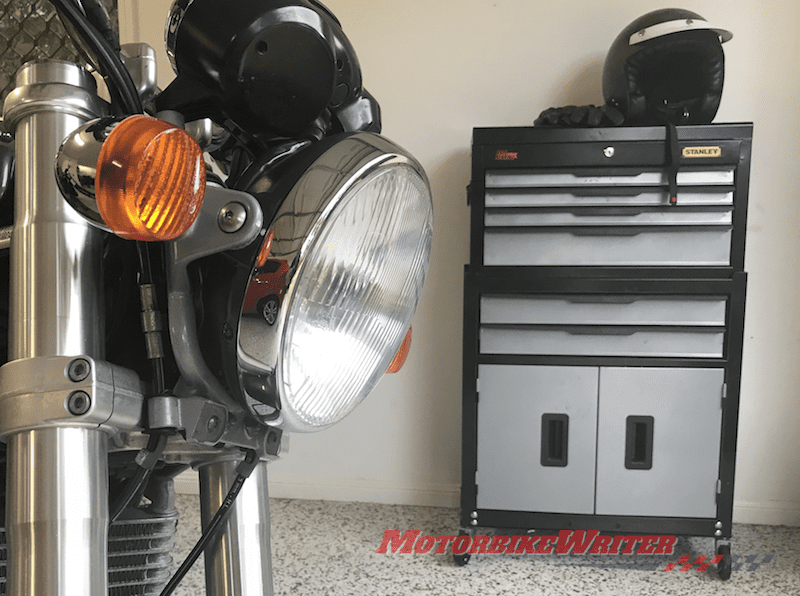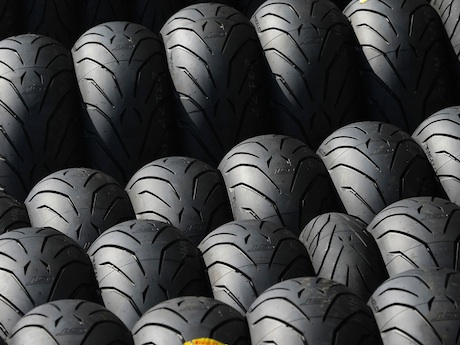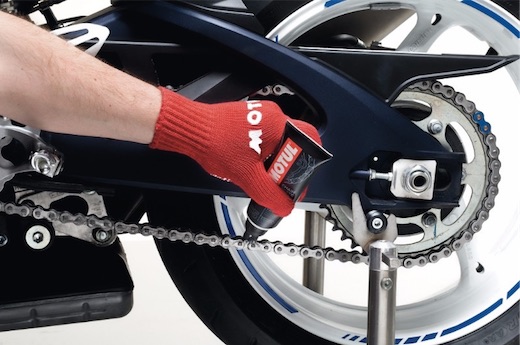While they might have half as many wheels, motorbikes still share a lot of qualities with automobiles in terms of care.
The most important is regular maintenance in order to maximise the life of the vehicle and minimise the amount of trouble it causes you. While our handy care tips will help you keep your bike healthy, remember that it also needs regular (i.e. annual) check-ups with a professional mechanic. Now, on to the motorbike tips!
1) Take Steps To Cultivate Your Motorcycle Knowledge
The more you know about your bike – and motorcycles in general – the better you’ll be able to understand potential issues and diagnose problems. Take the time to read your bike’s owner’s manual. Every bit of information there can be helpful. You might want to broaden your horizons by joining a motor club, too. Fellow bike owners and enthusiasts can become a useful resource for helping you to diagnose problems. A little social interaction is a bonus, too. Get to know the right tools to use through a tools specialist.
2) Change Your Oil Regularly
As with any motor vehicle, a motorcycle absolutely requires regular oil changes. The requirements of specific models vary, but as a rule of thumb, you can expect to need an oil change every 3,000 to 6,000 miles (5,000 to 10,000 km).
An annual mechanic’s check-up typically includes an oil change, and for many riders, this will take care of all your needs. Check your owner’s manual carefully, particularly if you have a new bike. Be aware that generally speaking, your bike will consume oil faster during the summer than the winter. Oil filters need to be changed regularly along with oil.
As a general rule of thumb, the frequency of oil changes depends on two factors: how old your bike is and what sort of oil you use. Newer engines run more efficiently and so can go longer in between oil changes. Similarly, the latest synthetic oils, while being a little more expensive, also tend to last longer.
3) Keep Brake Pads Fresh
All of the maintenance information offered here is important, but it’s impossible to overstate just how vital it is to keep your brake pads thick and effective. Worn brake pads may well lead to a fatal accident. Whenever your brake pads wear down to 2 millimetres or less, they need to be replaced.
Experienced mechanics estimate that you should check your pads every 6,000 to 9,000 miles (10,000 to 15,000 km). Brake wear will depend on your driving habits and your environment. In areas that confront you with lots of slopes and frequent starts and stops (e.g. hilly cities), your brake pads will wear out faster. Inclined surfaces are not your friend if you neglect your brake pads. You might be putting your bike – not to mention your life and the lives of others – at risk.
4) Check Your Tyres
According to Mark’s mobile glass tyre maintenance is a fundamental part of motorcycle operation. It’s good to give your tyres a quick check before any major journey. Look for signs of damage like tears, holes, and cracks, and make sure the pressure and tread depth are within recommended levels. As with the previous point on brake pads, you need to be aware that environmental conditions affect the lifespan of your tyres. In the right climate conditions, tires can even rot! Don’t let worn tyres stay on your bike any longer than they have to; change them as soon as possible.
Over-inflated tyres reduce the amount of contact between your bike and the road and rob you of potentially-vital grip. Under-inflated tyres reduce your bike’s stability and make handling and braking harder than they should be. Use an ordinary pressure gauge to check your tire pressures, but remember only to do this while your tires are cold. Hot tires fresh off the road will read inaccurately.
5) Clean Your Air Filter Regularly
To keep your bike in tip-top shape, you need to clean out the air filter every 6,000 miles (10,000km). The air filter does an important job, protecting the more delicate internal parts of your engine from airborne dust and other particles that could damage it. Here too environmental factors make a difference. If you’re riding in an extremely dusty environment, you may need to clean out your air filter on a weekly basis. Conversely, a rural area without a lot of smog might allow you to space out your filter cleanings significantly. Regardless of the environment around you, don’t forget to take care of your air filter on a regular basis.
6) Replace Coolant Bienially
Your motorcycle’s engine relies on liquid coolant to manage temperature changes smoothly and prevent damage. The coolant needs to be replaced about every two years. As with many vehicle fluids, engine coolant may be used up at an accelerated pace if you subject your bike to frequent and extended mileage.
Motorcycles use an equal mix of antifreeze and de-ionised water as engine coolant. Remember to use the radiator hoses to expel unwanted air after replacing or topping up your coolant. Use coolant recommended in your owner’s manual.
7) Care for Your Fork Oil
Fork oil smooths out the bumps and roughness of the road beneath you, and having enough fresh fork oil makes an enormous difference in how smooth your overall ride is. The longer you ride (both in distance and time), the more you’ll appreciate your fork oil. It also does an important job of lubricating all of the bike’s moving parts outside the engine. Check your fork oil regularly. Changing your fork oil is a job you can do yourself with the right equipment, but if you’re not able to do it, make sure your mechanic handles it for you.
8) Keep Your Chain Healthy 
Your bike chain needs to stay well-oiled and taught in order to prevent rough gear shifting and excessive mechanical wear. Chains typically last 18,000 miles (30,000km) or more with reasonable, so frequent replacement isn’t necessary. Checking the tension is never a bad idea, though! Note that when you’re checking chain tension, you need to place a weight similar to a rider on the bike. It’s the pressure the chain experiences when the bike is fully loaded that you need to check.
9) Battery Lifespan
Most motorcycle batteries have a usable life of about two years. Even if you do everything in your power to pamper your battery, when it quits on you there’s nothing you can do. Always consult a professional mechanic before replacing your battery. Don’t forget that your battery needs to be recharged regularly in order to maximise its lifespan. This is particularly important in winter, when you may not be riding your bike frequently enough to recharge it. Batteries that are charged up regularly last longer than those that are allowed to discharge fully.
Note that spark plugs also need a regular check, usually between 4,000 and 8000 miles (6,000 and 12,000km).
10) Pay Attention To Your Bike
Following commonsense maintenance procedures and following all of the recommendations provided by your owner’s manual will go a long way toward maximising its condition even over many years of hard use. Try not to take your motorcycle for granted. Be vigilant about it and take care! If the feeling of the ride changes or you start to hear changes in how the engine sounds, don’t ignore those signs. This goes hand in hand with expanding your general motorcycle knowledge and your understanding of your own bike in particular. Once you see the warning signs of a potential problem, take action or take it to a mechanic right away.






